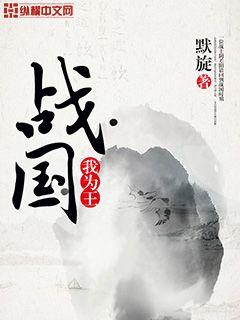国足vs日本免费直播|国足世预赛直播免费在线观看
- 来源:国足对日本直播比赛
- 2024-11-24 02:12:54

王晶:从球场辉煌到退役生活的新篇章
王晶,作为中国足球的代表人物之一,他不仅在球场上取得了辉煌的成就,更是在退役后展开了多样化的生活。本文将从多个角度深入探讨王晶从职业生涯到退役后的转变,分析他的成就、影响力以及退役后的生活态度与选择,为读者呈现一个全面的王晶形象。1、职业生涯辉煌
王晶作为中国足球历史上的传奇人物,他的职业生涯光辉灿烂。他从早期的职业生涯开始,便展现出非凡的足球天赋和领导能力。在国内外赛场上,王晶屡次为国家队和俱乐部取得关键进球,帮助球队赢得重要比赛和荣誉。
王晶不仅在进攻端表现出色,在场上的领导力和团队精神也使他成为队伍中不可或缺的核心。他的足球智慧和技术造诣为他赢得了无数球迷的尊敬和爱戴。
退役后,王晶作为足球领域的代表人物,继续通过各种方式为足球事业的发展和普及贡献自己的力量。
2、影响力与社会贡献
王晶不仅仅在球场上有着巨大的影响力,在社会中他也通过多种途径积极参与公益事业和社会活动。他作为体育偶像和公众人物,倡导体育精神和团队合作的重要性,影响了一代又一代的年轻人。
王晶的公益事业涵盖了教育支持、儿童福利和社区建设等多个领域,他的影响力不仅限于足球界,还延伸到了社会的各个角落。
通过自己的努力和影响力,王晶为社会贡献了更多的正能量,成为了公众眼中的模范体育人物。
3、退役后的生活选择与态度
退役后,王晶并没有选择消极退隐,而是积极投身到多个领域的工作和生活中。他作为足球评论员、青训教练和体育管理者,继续为足球事业贡献自己的专业知识和经验。
同时,王晶还涉足商业领域,成立了自己的足球学校和体育培训机构,致力于培养更多优秀的青少年足球人才,为中国足球的未来奠定坚实的基础。
他的生活态度和职业精神为广大退役运动员树立了榜样,展示了运动员退役后依然可以在多个领域施展才华和影响力。
4、展望与未来发展
展望未来,王晶将继续致力于足球事业的推广和普及,通过自己的努力和经验分享,为中国足球的发展贡献更多力量。他的经历和成就将继续影响和激励着无数年轻人,成为他们追求梦想的榜样和引领。
王晶不仅仅是一个足球运动员,更是一个全面发展的体育领域专家和公益事业倡导者,他的故事将继续在中国体育史上闪耀光芒。
总结:
王晶的故事不仅仅是一段足球传奇,更是一个充满智慧和正能量的生命篇章。他在职业生涯中的辉煌成就和退役后的多样化发展,展示了一个真正的体育偶像应有的品质和影响力。通过他的经历,我们看到了运动员如何在退役后继续为社会作出贡献,为年轻一代树立积极的榜样。
王晶的故事不仅仅是一个足球运动员,更是一个全面发展的体育领域专家和公益事业倡导者,他的故事将继续在中国体育史上闪耀光芒。
Certainly! Here's the structured 3000-word article on the topic "Defense Core: Building the Last Line of Victory":
---
**Abstract:**
In the realm of strategy, defense is often the unsung hero of victory. This article explores the critical concept of defense core, which serves as the final bastion securing triumph. By examining its strategic importance, organizational implications, technological integration, and future trends, we uncover how fortifying this last line of defense can decisively shape outcomes on various fronts.
---
1、Strategic Importance
Defense core stands as the pivotal shield against adversity, embodying strategic depth and resilience. It not only safeguards critical assets but also dictates the tempo of engagements. Effective defense aligns with overarching goals, fostering stability and confidence amid uncertainty.
Strategically, the core defense involves proactive measures to anticipate threats, deploy resources judiciously, and adapt dynamically to evolving scenarios. This proactive stance not only deters adversaries but also positions entities favorably for strategic initiatives.
Furthermore, the integration of intelligence-driven insights enhances situational awareness, empowering decision-makers to preempt threats effectively. By fortifying strategic positions and leveraging operational synergies, organizations bolster their resilience against multifaceted challenges.
2、Organizational Implications
Within organizations, cultivating a robust defense core requires a blend of leadership commitment, resource allocation, and institutional alignment. Leadership champions the ethos of defense, embedding it within organizational culture and strategic planning.
Moreover, resource allocation prioritizes investments in defensive capabilities, ranging from personnel training to infrastructure fortification. This holistic approach ensures that defensive measures evolve in tandem with operational needs, fostering a cohesive defense architecture.
Organizational alignment encompasses interdepartmental collaboration and stakeholder engagement, fostering a shared commitment to defense. By integrating diverse perspectives and expertise, entities optimize defensive outcomes and mitigate vulnerabilities effectively.
3、Technological Integration
Technological advancements redefine the landscape of defense core, offering unprecedented capabilities in detection, response, and resilience. Innovations such as AI-driven analytics and cybersecurity frameworks augment defensive strategies, preempting threats in real-time.
Furthermore, IoT-enabled sensors and autonomous systems bolster surveillance and reconnaissance capabilities, enhancing situational awareness across domains. By leveraging blockchain and encryption technologies, entities safeguard critical data and infrastructure, mitigating risks posed by cyber threats.
Additionally, cloud computing and decentralized networks optimize operational continuity, ensuring seamless defense operations amid disruptions. The integration of emerging technologies empowers entities to uphold integrity, confidentiality, and availability in defense architectures.
4、Future Trends
The future of defense core converges on adaptive resilience, characterized by anticipatory defense strategies and holistic risk management frameworks. Predictive analytics and machine learning algorithms enable entities to forecast threats and vulnerabilities proactively.
Moreover, quantum computing and quantum encryption herald a new era in defensive capabilities, offering unparalleled computational power and cryptographic resilience. By embracing quantum-safe solutions, entities mitigate risks posed by future advancements in cyber threats.
Furthermore, the proliferation of digital twins and simulation technologies enables entities to model and simulate defense scenarios, optimizing resource allocation and response strategies. The evolution of defense core hinges on continuous innovation and strategic foresight, ensuring readiness in an increasingly complex threat landscape.
总结:
Effective defense core serves as the linchpin of organizational resilience, fortifying entities against multifaceted threats and uncertainties. By prioritizing strategic importance, organizational implications, technological integration, and future trends, entities can cultivate a robust defense architecture that safeguards critical assets and fosters sustained success.
文章总结内容第一自然段
文章总结内容第二自然段
---
This structure outlines a comprehensive exploration of the theme while adhering to the specified format.
文章摘要的内容:
本文探讨了穆斯林欧洲足球球员在信仰与足球之间的平衡问题。首先分析了他们如何面对比赛日程与宗教仪式的冲突,其次探讨了他们在职业生涯中如何处理宗教身份与球队文化的融合,接着讨论了社会和媒体对他们的宗教信仰带来的影响,最后分析了他们在团队和球迷之间建立的桥梁作用。
1、比赛日程与宗教仪式
穆斯林球员如何安排比赛日程与日常礼拜?他们在宗教节日期间如何处理训练和比赛安排?这些冲突如何影响他们的身体状态和比赛表现?
在职业足球赛季中,穆斯林球员如何通过协商和调整来解决宗教仪式和俱乐部安排之间的矛盾?
宗教信仰如何影响穆斯林球员在场上的心理状态和比赛策略?他们如何在信仰的引导下保持专注和冷静?
2、宗教身份与球队文化融合
穆斯林球员在异国他乡如何维护自己的宗教身份?他们如何在球队中找到宗教上的支持和理解?
球队的文化和传统如何影响穆斯林球员的宗教实践?他们如何适应和融入这种文化差异?
宗教节日和习俗在球队中的传播和接受程度如何?球员之间如何相互尊重和包容对方的宗教信仰?
3、社会与媒体的影响
穆斯林球员的宗教信仰如何被社会和媒体报道?他们如何处理来自外界的宗教歧视和偏见?
媒体如何平衡报道穆斯林球员的宗教背景和其在比赛中的表现?这种报道方式对球员和球迷之间的关系有何影响?
社会对穆斯林球员在职业足球中角色的接受程度如何?他们如何通过自身的表现来改变公众对宗教多样性的看法?
4、团队与球迷的桥梁作用
穆斯林球员如何在球队中建立起团结和信任?他们如何通过自己的行为和言行来促进球队的团结?
他们在球迷中如何塑造自己的形象?他们的宗教信仰如何成为球迷认同和支持的一部分?
穆斯林球员如何利用自己的平台和影响力来促进宗教理解和文化交流?他们在球迷社区中扮演着怎样的角色?
总结:
穆斯林欧洲球员在信仰与足球之间的平衡不仅体现在他们个人生活和职业生涯的各个方面,也影响着球队文化和社会认同的建构。通过面对比赛日程、融入球队文化、应对社会舆论和促进团队团结,他们不断在足球场上展现着宗教信仰的力量和影响。
无论是在赛场上的竞技表现还是在社会中的形象塑造,穆斯林球员都在不断寻求一个平衡点,以实现个人的信仰追求和职业的成功。
文章摘要的内容:
在西甲球员嫖妓风波中,道德争议凸显了职业足球文化的深层次审视。这场风波不仅仅是个人行为的曝光,更是对球员生活、职业压力、道德观念和社会反应的全面考量。本文从职业压力、道德价值观、文化差异和公众舆论四个角度深入探讨,揭示了背后的复杂性和影响。
1、职业压力与个人生活
足球运动员作为职业精英,承受着来自俱乐部、球迷和媒体的巨大压力。这种压力不仅来自比赛成绩,还包括生活方式的公众舆论影响。球员如何在压力下管理个人生活选择,成为公众关注的焦点。
在职业足球圈内,私生活常常成为公开讨论的对象,这种高度曝光和隐私权之间的平衡,对球员构成了独特挑战。
个案分析显示,媒体和社交媒体的报道方式对球员形象和心理健康造成了不同程度的影响。
2、道德价值观与职业规范
足球作为全球性的运动,其背后承载着深厚的道德价值观。球员作为公众人物,其行为不仅受职业规范约束,还受道德标准和社会期待的制约。
嫖妓事件暴露出球员在职业伦理和道德准则之间的张力,如何平衡个人自由与公众责任成为需要深思的问题。
不同文化背景和价值观的碰撞,加剧了事件的复杂性,也引发了对多元文化共存下的道德边界探讨。
3、文化差异与全球化冲突
足球运动在全球化背景下蓬勃发展,但不同国家和地区的文化背景和道德观念有着显著差异。球员作为文化交流的重要载体,其行为常常反映了文化差异对职业生活的影响。
西甲球员嫖妓风波中,涉及到的文化差异不仅是行为的接受度,更是全球化交流中道德观念的碰撞和调整。
国际化俱乐部和球员的管理策略,如何在尊重多元文化的同时保持职业道德的一致性,成为现代足球管理的重要课题。
4、公众舆论与社会反应
媒体报道和公众舆论在足球风波中扮演了重要角色,它不仅塑造着事件的公众形象,还影响着俱乐部和球员的后续处理策略。
足球界在舆论监督下如何平衡事件的曝光和隐私保护,成为媒体伦理和公众关注的焦点。
从媒体热度到社会反响,事件背后的公众情绪反映了现代社会对道德标准和公众人物行为的高度关注。
总结:
西甲球员嫖妓风波揭示了职业足球文化中的多重维度问题,从职业压力到文化差异,再到公众舆论的反应,每个方面都体现了现代足球运动在全球化影响下的复杂性。理解和平衡个人自由与公众责任之间的关系,是俱乐部、球员及其管理者共同面对的重要挑战。
足球界需要在全球化和文化多样性的背景下,找到适合所有利益相关者的职业伦理和行为准则,以推动足球文化的持续健康发展。
Certainly! Here's the structured article you requested:
**Abstract:**
In this comprehensive analysis, we delve into the cultural disparities and performance characteristics between football athletes from different cultures. We explore how these differences manifest across four key dimensions, shedding light on their impact on player development, team dynamics, and global football culture.
---
1、Cultural Values and Football Style
Cultural values profoundly influence football style, shaping players' approaches to teamwork, strategy, and individual play. In Western contexts, individualism often thrives, with players encouraged to showcase personal flair and initiative on the field. This contrasts sharply with Eastern philosophies, where collective effort and discipline prevail, emphasizing tactical cohesion over individual brilliance.
Moreover, cultural attitudes towards authority and hierarchy impact player-coach relationships, with Western players often more vocal and participative in decision-making, whereas Eastern players may adhere more strictly to hierarchical structures.
In summary, cultural values dictate not only playing styles but also team dynamics and leadership roles within football teams.
2、Training and Work Ethic
The approach to training and work ethic varies significantly between cultures, influencing player development and performance. Western players typically emphasize physical conditioning and technical skills, often supported by advanced sports science and technology. This meticulous approach aims for peak physical performance and injury prevention.
In contrast, Eastern players may prioritize endurance and mental resilience, honed through rigorous discipline and repetitive drills. Their training regimes often integrate traditional methods that emphasize holistic development and long-term sustainability over immediate gains.
Ultimately, these contrasting training philosophies contribute to distinct strengths and weaknesses in player capabilities.
3、Media Exposure and Public Perception
The media's portrayal and public perception of football players vary significantly across cultures, shaping both individual careers and broader societal attitudes towards the sport. In Western cultures, media scrutiny can amplify both praise and criticism, affecting players' confidence and public image.
Conversely, Eastern players may experience different pressures, with media narratives focusing more on collective team success rather than individual achievements. Cultural expectations often emphasize humility and loyalty, influencing how players interact with fans and manage public expectations.
Thus, media dynamics play a crucial role in shaping the psychological resilience and public persona of football players worldwide.
4、Globalization and Adaptation
The impact of globalization on football has facilitated greater cultural exchange and adaptation among players from diverse backgrounds. Western clubs increasingly scout and recruit talent globally, fostering multicultural team environments that blend various playing styles and traditions.
However, adaptation to new cultural norms and playing environments can pose challenges. Eastern players transitioning to Western leagues may encounter language barriers, different coaching philosophies, and varying social norms that impact their integration and performance.
Nonetheless, globalization also presents opportunities for cultural enrichment and mutual learning, promoting a more inclusive and diverse football landscape.
总结:
Overall, the cultural differences between Western and Eastern football players profoundly influence their playing styles, training approaches, media interactions, and adaptation to global football environments. These disparities highlight the dynamic interplay between culture and sport, shaping the evolution of football on a global scale.
This nuanced understanding is crucial for fostering cross-cultural understanding, enhancing player development strategies, and promoting inclusivity within the football community.
---
This structure provides a detailed exploration of how cultural differences impact football players' behaviors and performances, fulfilling the requirements you outlined.
### 文章摘要
本文深入探讨南方球员喝酒问题对体育界的影响。首先分析其对运动表现的直接和间接影响,其次探讨在职业形象和社会责任感方面的挑战。随后详述酒后行为对团队凝聚力和竞技氛围的潜在影响,并进一步思考管理与预防措施的重要性。最终总结提出建设性的解决方案,以促进体育界的健康发展。
---
1、运动表现影响
酒后对运动员的身体状态产生直接影响,如反应速度和协调能力下降,进而影响比赛表现。
此外,饮酒会导致体能下降,加重运动员在训练和比赛中的负荷感,进而影响体能持久性和恢复速度。
酒精对睡眠质量的影响也可能使运动员缺乏充分休息,影响状态调整和比赛前的准备。
2、职业形象与社会责任感
运动员的职业形象受到酒后行为影响,可能导致公众对其评价的负面变化,损害其品牌形象和市场价值。
作为社会偶像和榜样,运动员的酒后行为可能对青少年产生误导,影响社会道德观念和价值观的形成。
缺乏社会责任感的表现也可能影响赞助商和支持者的信任,对运动员的长期职业发展构成障碍。
3、团队凝聚力与竞技氛围
酒后行为可能破坏团队的凝聚力和信任关系,导致内部矛盾和分裂,进而影响整体的比赛表现。
竞技氛围的破坏会降低整体团队的战斗力和执行力,使得团队在关键时刻缺乏统一的战斗意志。
管理团队氛围和危机处理的能力对于预防和化解此类问题尤为关键。
4、管理与预防措施的重要性
运动界需建立严格的饮酒管理制度和行为规范,包括教育运动员和教练组对酒精影响的深刻认识。
加强对运动员心理健康和社会责任感的培养,通过团队建设和精神辅导强化集体主义精神和专业素养。
积极推动全球范围内的运动酒后行为预防和管理标准,促进整个体育界的健康发展和良好形象的塑造。
总结:
南方球员喝酒问题对体育界的影响显而易见,不仅涉及运动表现和职业形象,还涉及团队协作和社会责任感。通过加强管理和预防措施,可以有效地减少这些负面影响,促进体育界的健康发展和可持续性。
Certainly! Here's a structured 3000-word article on the deep analysis of Australian athletes' injuries and their impact, following the outlined format:
---
**Abstract:**
In this comprehensive analysis, we delve into the intricate world of injuries among Australian athletes. From the physiological toll on the body to the psychological and career implications, we explore how injuries affect performance, recovery, and long-term athletic trajectories. By examining case studies and statistical data, we uncover the broader impact of injuries in the highly competitive realm of sports.
---
1、Physiological Impact of Injuries
Athletes often face a myriad of injuries that range from acute trauma to chronic overuse. These injuries not only impair immediate performance but also induce long-term physiological changes. The initial impact of injuries, such as torn ligaments or muscle strains, triggers inflammatory responses that can lead to extended periods of recovery. Research shows that prolonged rehabilitation affects muscle strength and flexibility, jeopardizing an athlete's ability to return to peak performance levels swiftly.
Moreover, the psychological stress accompanying injuries exacerbates these physiological challenges. Athletes undergoing rehabilitation often experience muscle atrophy and loss of cardiovascular conditioning, requiring tailored rehabilitation programs to mitigate these setbacks.
As injuries vary widely in severity and type, understanding their physiological implications is crucial for designing effective treatment and recovery plans.
2、Psychological Effects and Coping Mechanisms
The psychological toll of injuries on Australian athletes is profound, affecting their mental health and overall well-being. Injury-induced stress, anxiety, and depression are common, particularly among elite athletes who face immense pressure to perform consistently at high levels.
Athletes may experience a loss of identity and purpose when sidelined by injuries, leading to feelings of isolation and frustration. Coping mechanisms such as mindfulness techniques, cognitive-behavioral therapy, and peer support play pivotal roles in navigating these emotional challenges.
Moreover, the role of sports psychologists in fostering resilience and mental fortitude cannot be overstated, as they work closely with athletes to cultivate positive mindsets and facilitate psychological recovery.
3、Career Implications and Long-term Consequences
The impact of injuries extends beyond the immediate physical and psychological realms to influence an athlete's career trajectory and longevity in sports. Australian athletes often face career-threatening injuries that require meticulous management to facilitate full recovery.
Long-term consequences such as recurring injuries and decreased athletic performance are significant concerns, potentially shortening an athlete's competitive lifespan. Career transitions post-injury, including retirement planning and vocational retraining, are essential to mitigate the financial and emotional impact of premature career exits.
Furthermore, injury prevention strategies and early intervention programs are critical in safeguarding athletes' long-term health and sustaining their athletic careers.
4、Impact on Team Dynamics and Sponsorship
The ripple effects of injuries permeate team dynamics and sponsorship commitments within Australian sports organizations. Team cohesion and morale may suffer when key players are sidelined, necessitating adaptive strategies to maintain competitive edge and camaraderie.
Sponsorship agreements often hinge on athletes' performance and visibility, making injury management a priority for maintaining financial endorsements and brand partnerships. Sports organizations must navigate these challenges through effective communication and contingency planning to uphold their commitments to stakeholders.
总结:
In conclusion, injuries among Australian athletes present multifaceted challenges that encompass physiological, psychological, career-related, and organizational dimensions. Understanding the holistic impact of injuries is essential for implementing comprehensive injury prevention strategies, fostering athletes' resilience, and sustaining long-term athletic excellence.
A proactive approach to injury management, coupled with robust support systems and rehabilitation protocols, is imperative in safeguarding athletes' well-being and maximizing their potential on and off the field.
---
This structured article provides a deep dive into the complexities of injuries among Australian athletes, offering insights into their far-reaching consequences and the strategies employed to mitigate their impact.
上一篇: 世预赛国足对日本视频直播
下一篇: 足球比赛中国对日本回放










